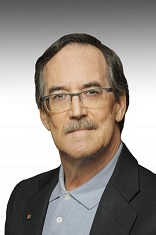Neurotoxin Exposure Treatment Parkinson's
Remembering Dr. Robert Burke: A Pioneer in Neuro-restorative Approaches to Treating Parkinson's Disease



Posted April 17, 2018

Dr. Robert Burke
Dr. Robert Burke - husband, father, and grandfather - passed away on January 1, 2018 at the age of 68. He was a professor of Neurology at Columbia University and a leader in the field of neurobiology and Parkinson's disease (PD) research. Throughout his notable career, Dr. Burke received research grants from numerous organizations including the Dystonia Medical Research Foundation, the Michael J. Fox Foundation for Parkinson's Research, the Congressionally Directed Medical Research Programs (CDMRP) and the National Institute of Neurological Diseases and Stroke. He held leadership positions in the American Academy of Neurology, the Movement Disorder Society, and the World Parkinson Congress and was previously the Director of the Columbia University Udall Center of Excellence for Parkinson's disease.
In 2012, he received a grant for his research in response to a Broad Agency Announcement released by the CDMRP's Neurotoxin Exposure Treatment Parkinson's (NETP). With this award, Dr. Burke proposed to investigate the use of gene therapy to activate the mammalian target of rapamycin (mTOR) signaling pathway to induce new axon growth. This research challenged the idea that a mature brain cannot regenerate axons and opened the door for novel therapeutic options for PD and other neurologic diseases characterized by axonal degeneration.
Cell-based therapies for neurodegenerative diseases such as PD have been studied for years. However, due to the limited ability to diagnose PD in its preclinical stages, Dr. Burke recognized the need for therapies that can reverse the damage to the axons in the brain during the early phases of the disease. Therefore, he focused his work on gene therapy approaches for reactivating the intrinsic factors in the brain that regulate axonal growth but are thought to "turn off" after the brain has matured. One such pathway involves the master kinase mTOR. In his preliminary work, Dr. Burke used an adeno-associated virus (AAV) vector with two different altered genes to activate the mTOR pathway in a rodent model of PD. Remarkably, the dopaminergic axons successfully regrew after degeneration by neurotoxin1,2. The AAV vector contained either myristoylated Akt (MYR-Akt) kinase or the guanosine triphosphate hydrolase Ras homologue enriched in brain (GTPase hRheb). However, Dr. Burke recognized that this technique could not be used as gene therapy for patients, as Akt and hRheb are potent oncogenes. In an effort to de-risk these genes, he investigated methods of exploiting the axon growth phenotype, while eliminating the oncogenic effects of this approach. Using his NETP award, Dr. Burke attempted to identify the critical mediators downstream of mTOR that regulate axon growth. He hypothesized that p70S6K, a key substrate for mTOR, plays a crucial role in axon growth and can therefore induce axon regeneration in damaged dopamine neurons. Dr. Burke successfully showed that an AAV vector with p70S6K induced functional axon growth in dopamine neurons similar to that of MYR-Akt and hRheb.
Prior to his death, Dr. Burke planned to continue this research by further investigating p70S6K expression in neurons and how that expression relates to the ability to regenerate axons. While further studies are needed to validate Dr. Burke's important findings, he undoubtedly set the foundation for creating novel gene therapies that could restore axonal growth and compliment current cell-based therapies for those living with PD.
Selected Publications:
Padmanabhan S and Burke RE. 2018. Induction of axon growth in the adult brain: A new approach to restoration in Parkinson's Disease. Movement Disorders 33(1):62-70.
Rolland A-S, Kareva T, Kholodilov N, and Burke RE. 2017. A quantitative evaluation of a 2.5 kb rat tyrosine hydroxylase promoter to target expression in ventral mesencephalic dopamine neurons in vivo. Neuroscience 346:126-134.
Rolland A-S, Kareva T, Yarygina O, Kholodilov N, and Burke, RE. 2016. Expression mediated by three partial sequences of the human tyrosine hydroxylase promoter in vivo. Molecular Therapy - Methods & Clinical Development 3:16062.
Padmanabahn S, Kareva T, Kholodilov, N, and Burke, RE. 2014. Quantitative morphological comparison of axon targeting strategies for gene therapies directed to the nigro-striatal projection. Gene Therapy 21:115-122.
References:
1Kim SR, Chen X, et al. 2011. Dopaminergic pathway reconstruction by Akt/Rheb-induced axon regeneration. Annals of Neurology. 70:110-120.
2Kim SR, Kareva T, et al. AAV transduction of dopamine neurons with constitutively active Rheb protects from neurodegeneration and mediates axon regrowth. Molecular Therapy. 2012;20:275-26
Link:
Columbia University Department of Neurology In Memoriam for Robert E. Burke, MD














